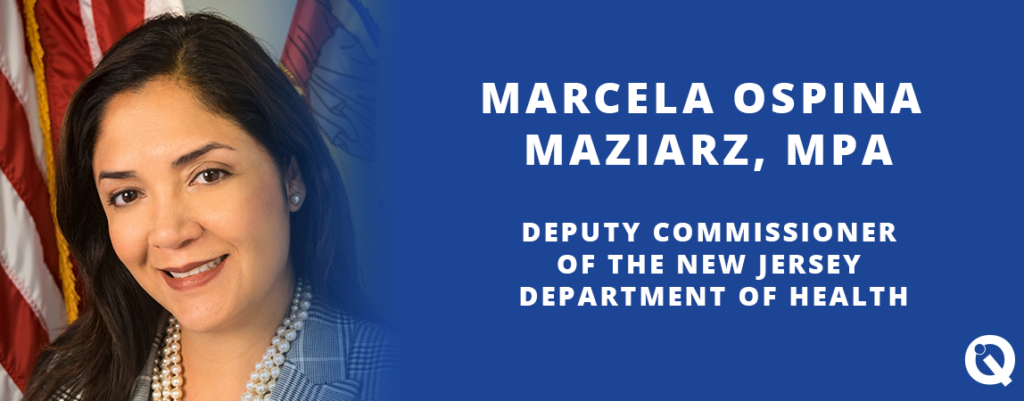Marcela Ospina Maziarz, MPA, is the Deputy Commissioner of the New Jersey Department of Health.
We know that the Health Resources and Service Administration, part of the federal government, selected New Jersey as one of nine states to receive a grant to improve maternal health. Can you tell us how New Jersey is using that grant?
Absolutely. So, I want to give you a little bit of a background. We have some of the worst outcomes in maternal health in the country. The outcomes are even worse if you’re a mother of color, especially if you’re a non-Hispanic black woman. Non-Hispanic black women experience pregnancy-related mortality at nearly five times that of white counterparts in the state.
There has been a long commitment in the state of New Jersey from government, the nonprofit sector, from the hospitals, the New Jersey Perinatal Care Quality Collaborative, and the New Jersey Hospital Association. But we haven’t really moved the needle.
So, we’ve decided to address the crisis in an innovative manner with the Department of Health. The funding will help us to build upon that maternal dashboard that we’ve created to make it better, to facilitate more rapid cycle data analytics, and to generate ready feedback and evaluation that can be used by the providers to start their quality improvement processes — and also by the public.
We are also going to be enhancing the ability of the New Jersey Maternal Mortality Review Committee to be able to review every death and provide information to the state on what can be done better.
We are going to leverage and establish the New Jersey Maternal Care Quality Collaborative with 34 members from within and outside government. The collaborative will plan and implement structural reforms to avert maternal death, disabilities, and disparities.
We’re going to be working on implicit bias training for all providers in healthcare and for all facilities to be aware of implicit bias…We’re going to be building new solutions to longstanding problems.
How do you think that collecting and publishing this data will improve child and maternal health?
Data-to-action is the tenet for everything that we’re doing. One of the data points that we found was that for low-risk, first-time births, only eight out of 49 birthing hospitals in New Jersey achieved the national Healthy People 2020 goal of less than 23.9 percent Cesarean section rate. This is also what Leapfrog has as a target. This is 2016 data and we have been working with hospitals and we know things are improving. Unnecessary surgical births are a driver of adverse outcomes, particularly among African American women. So we wanted to start gathering data to show where we are right now, and where we need to work to improve. We know that 50 percent of maternal deaths are preventable.
As Deputy Commissioner, you led the Department’s work on building a new data dashboard on maternal health. Can you tell us about that work?
Our New Jersey Maternal Data Center website is going to be our main landing page for everything related to maternal outcomes: from information that could be used by providers, information that could be used by moms, and by consumers.
Our Report Card of Hospital Maternity Care includes interactive data on hospital-specific, and statewide, surgical birth rates, complication rates, and severe maternal birth complications. This dashboard enables users to compare rates by hospital, and view statewide breakdowns by race. It was the first time that such granular data was released by the state agency, and the first time that hospitals could see their peer’s outcomes.
Our work is built off 2018 legislation that set the floor of what we should report in the state of New Jersey. But the importance for us was to really create transparency and we built from that bill. And we hope to continue adding more and more timely information.
Can you tell us something about you outside of your professional life? What might people be surprised to learn about you, and where can we expect to see you on a sunny day when you are not working?
To learn that I moved to the U.S. when I was 19 to finish a Political Science degree from Rutgers. On a sunny day you will probably find me at a soccer or lacrosse game with my fingers crossed rooting for my two sons, who are aged nine and four.

